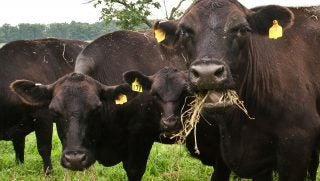It is no surprise that today our dairy farmers are facing tough milk prices. The truth of the matter is that going forward we must be realistic to expect these milk prices may never recover to the record highs they once were. Many family dairy farms have had to sell off their assets and pursue interests outside of the agriculture industry to survive — it is a common factor that will most likely continue to be prevalent as we move forward.
While the recent trade deal with Mexico and Canada did provide some help to the industry, if you actually break down the numbers, the added income to total dairy farmers equates to just pennies on the dollar. Mexico, fearing a shortage of milk from the U.S., sought imports from Europe instead during the conflict, which ultimately hurt the American dairy industry. Mexico was a large consumer of our milk, and based upon production statistics, the U.S. produces so much milk we are having issues finding a home for all of it. Add into the fact that some large-scale grocery chains are looking to vertically integrate their milk supply as well as adapt to changing consumer demand, the outlook certainly does not look good. There are, however, opportunities for today’s dairy farmers to mitigate their price risk as best they can.
The goal here is to simplify risk management in hopes our farmers can make some profit.
Commodity markets are naturally volatile due to outside factors beyond normal control. This is especially true with milk, as its various products are traded on an intercontinental scale. There are three common modes of marketing milk: futures trading, options trading, and spot trading.
Futures trading allows the seller to secure prices by forward contracting. Say, I think the price of milk will decline in the future but I like the price today, I can essentially call my local milk procurement source and lock in a futures price to secure my position. If the price indeed declines, the farmer has mitigated potential future risk since he or she will receive that forward price the day they called their buyer. While this can tend to be the easiest form of risk management for the everyday farmer, I believe it could be valuable for them to get in contact with an experienced trading partner to look into options trading.
Options are very similar to futures in they give someone the right (but not the obligation) to buy or sell milk within a given timeframe. To avoid as much confusion as possible, we will look at the simplest types of options that are traded: calls and puts. A call trade will fulfill when the market price of milk rises above the strike price set out in the agreement. So, say a producer buys 10 milk contracts at $3 market price and buys 10 option contracts at $5 strike price because they believe the market will reach that level. If the price goes above $5, the trade will be executed and the producer profits $2 on those 10 contracts of milk. Buying a put is essentially just the opposite to mitigate market downturns. If a producer feels the price of milk will drop well below $2 they can buy 10 milk contracts at $3 with a $2 strike price. When the market falls below $2 their option trades will execute locking in that $2. This essentially saves them from any loss that goes below $2. While options tend to deter some producers due to the complexity, working with marketing tools laid out to them can help simply the process and offset financial crisis.
When there is a time that arrives in which the producer needs immediate cash on hand and likes the price of milk today, they can use the spot option. While I do not recommend this route, due to the heavy risk involved, it is a viable last-resort method if there is a source to deliver to. The price will usually be set off the current price at which delivery is made. This option should only be used when needed, say if your cows have an exceptional production cycle and your inventory is well above what you projected.
Of course it is also important to note that there are other factors that go into making a profit, specifically feed costs. Net milk price minus production costs usually equal the farm’s net gain or loss. This is why it is highly encouraged that producers use managerial tools to be as efficient as possible. Working with agricultural lending it has been tough to see many dairy farms struggle to stay afloat. The common detail of the successful ones is that they are good managers, and have planned to have the financial resources to make it through the tough times.
By using marketing tools and managerial sources, American dairy farmers have the ability to make it through. The important thing is to be proactive and find the people who specialize in helping you survive. Without you all, they wouldn’t have a job after all.
See also:



